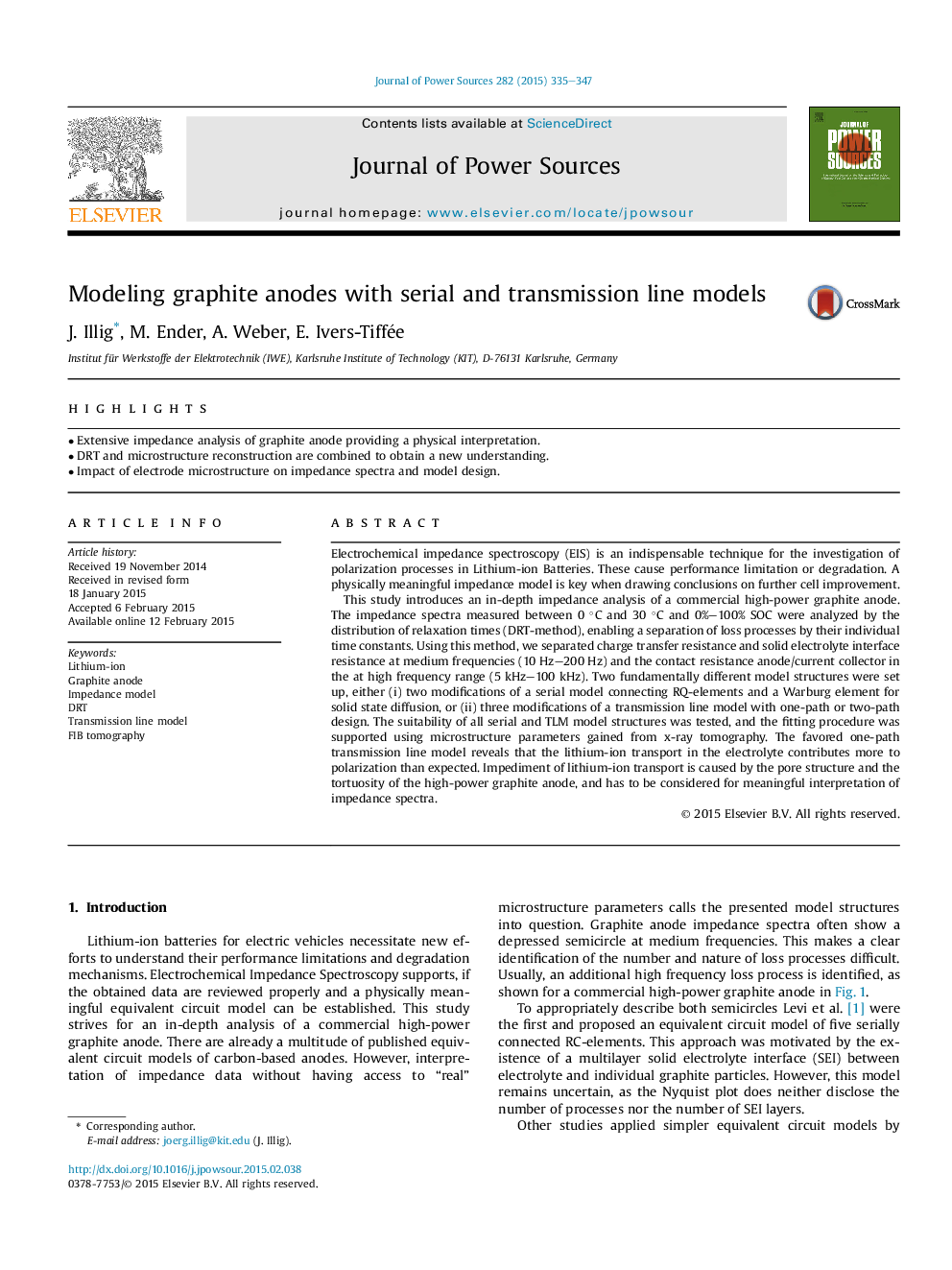| Article ID | Journal | Published Year | Pages | File Type |
|---|---|---|---|---|
| 7733045 | Journal of Power Sources | 2015 | 13 Pages |
Abstract
This study introduces an in-depth impedance analysis of a commercial high-power graphite anode. The impedance spectra measured between 0 °C and 30 °C and 0%-100% SOC were analyzed by the distribution of relaxation times (DRT-method), enabling a separation of loss processes by their individual time constants. Using this method, we separated charge transfer resistance and solid electrolyte interface resistance at medium frequencies (10 Hz-200 Hz) and the contact resistance anode/current collector in the at high frequency range (5 kHz-100 kHz). Two fundamentally different model structures were set up, either (i) two modifications of a serial model connecting RQ-elements and a Warburg element for solid state diffusion, or (ii) three modifications of a transmission line model with one-path or two-path design. The suitability of all serial and TLM model structures was tested, and the fitting procedure was supported using microstructure parameters gained from x-ray tomography. The favored one-path transmission line model reveals that the lithium-ion transport in the electrolyte contributes more to polarization than expected. Impediment of lithium-ion transport is caused by the pore structure and the tortuosity of the high-power graphite anode, and has to be considered for meaningful interpretation of impedance spectra.
Related Topics
Physical Sciences and Engineering
Chemistry
Electrochemistry
Authors
J. Illig, M. Ender, A. Weber, E. Ivers-Tiffée,
